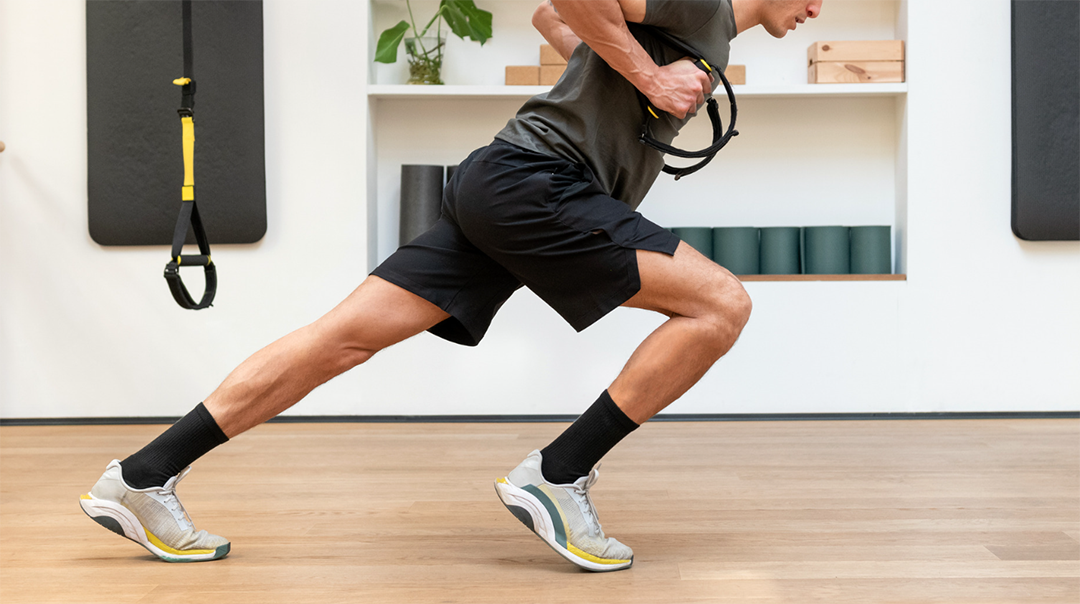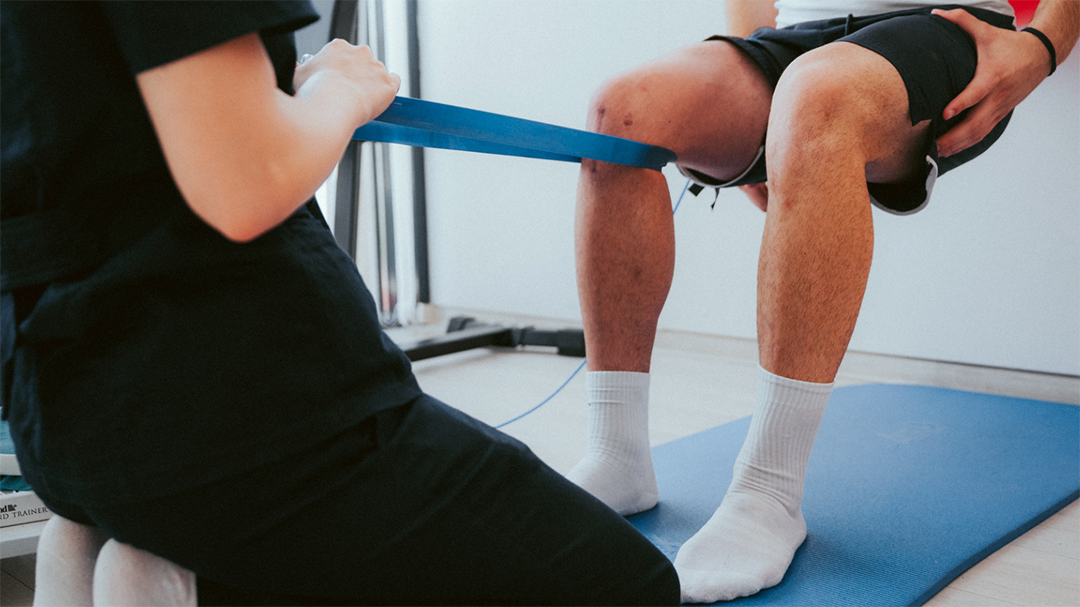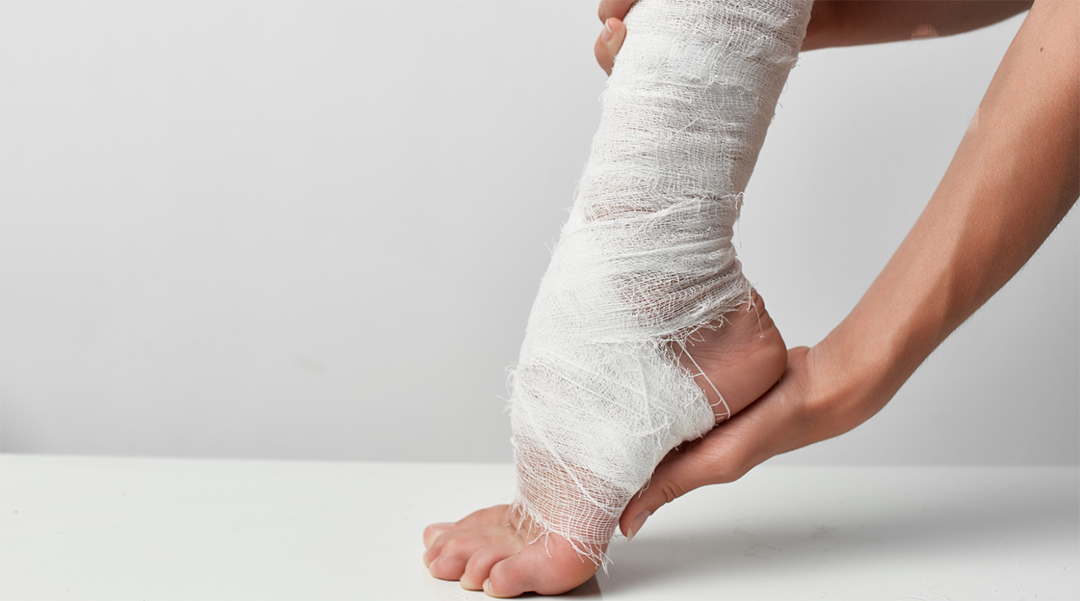Sports Injury Prevention and Recovery 101 | ABS-CBN
ADVERTISEMENT

Welcome, Kapamilya! We use cookies to improve your browsing experience. Continuing to use this site means you agree to our use of cookies. Tell me more!
Sports Injury Prevention and Recovery 101
Danah Gutierrez
Published Jul 31, 2024 04:39 PM PHT
|
Updated Aug 01, 2024 07:22 PM PHT
Achieving peak performance and maintaining a high level of physical fitness requires more than just hard work and talent—it demands a profound commitment to injury prevention and efficient recovery. Olympic athletes epitomize this dedication, employing strategies honed through years of rigorous training. We’ve gathered expert advice from esteemed Olympic trainers and athletes to stay injury-free and recover effectively.

Building Resilience
1. Prioritize Proper Warm-Ups
The significance of a comprehensive warm-up cannot be overstated. 'A proper warm-up increases blood flow to the muscles, making them more pliable and less prone to injury,' asserts Dr. John Rusin, a renowned strength coach. By incorporating dynamic stretches and mobility exercises, athletes prepare their bodies for the rigors of training and competition.
The significance of a comprehensive warm-up cannot be overstated. 'A proper warm-up increases blood flow to the muscles, making them more pliable and less prone to injury,' asserts Dr. John Rusin, a renowned strength coach. By incorporating dynamic stretches and mobility exercises, athletes prepare their bodies for the rigors of training and competition.
2. Focus on Flexibility and Mobility
Flexibility and mobility exercises are essential in injury prevention. Simone Biles, the legendary gymnast, integrates daily stretching and mobility routines into her schedule. 'Flexibility is key in gymnastics, and it helps me stay injury-free. I make sure to stretch thoroughly before and after training,' Biles reveals.
Flexibility and mobility exercises are essential in injury prevention. Simone Biles, the legendary gymnast, integrates daily stretching and mobility routines into her schedule. 'Flexibility is key in gymnastics, and it helps me stay injury-free. I make sure to stretch thoroughly before and after training,' Biles reveals.

3. Strength Training and Conditioning
Building a robust and balanced physique is crucial. Michael Phelps, the most decorated Olympian in history, credits his strength training regimen for his longevity and success. 'Strength training supports my muscles and joints, making them more resilient to the demands of swimming,' Phelps explains.
Building a robust and balanced physique is crucial. Michael Phelps, the most decorated Olympian in history, credits his strength training regimen for his longevity and success. 'Strength training supports my muscles and joints, making them more resilient to the demands of swimming,' Phelps explains.
4. Listen to Your Body
Understanding and respecting your body's signals is vital in preventing overuse injuries. Allyson Felix, a distinguished track and field athlete, advises, 'If something doesn’t feel right, take a step back and assess. Pushing through pain can lead to more serious injuries.'
Understanding and respecting your body's signals is vital in preventing overuse injuries. Allyson Felix, a distinguished track and field athlete, advises, 'If something doesn’t feel right, take a step back and assess. Pushing through pain can lead to more serious injuries.'
ADVERTISEMENT
Healing, Recovery, and Recuperation
1. Embrace Rest and Recovery Days
Rest is an integral part of any training regimen. Olympic marathoner Eliud Kipchoge underscores the value of rest days. 'Rest days allow your body to repair and strengthen itself. It’s during rest that your muscles actually grow,' Kipchoge states. Embracing rest is essential for long-term success.
Rest is an integral part of any training regimen. Olympic marathoner Eliud Kipchoge underscores the value of rest days. 'Rest days allow your body to repair and strengthen itself. It’s during rest that your muscles actually grow,' Kipchoge states. Embracing rest is essential for long-term success.

2. Use Active Recovery Techniques
Active recovery involves low-intensity exercises that promote blood flow and reduce muscle soreness. Mattie Rogers, an accomplished Olympic weightlifter, includes activities like yoga and light swimming in her recovery routine. 'Active recovery helps me stay loose and speeds up the healing process,' Rogers says.
Active recovery involves low-intensity exercises that promote blood flow and reduce muscle soreness. Mattie Rogers, an accomplished Olympic weightlifter, includes activities like yoga and light swimming in her recovery routine. 'Active recovery helps me stay loose and speeds up the healing process,' Rogers says.
3. Invest in Quality Sleep
Sleep is a powerful recovery tool. Dr. Charles Czeisler, a sleep expert who collaborates with Olympians, highlights, 'Adequate sleep is crucial for muscle recovery and mental sharpness. Aim for at least 7-9 hours of quality sleep each night.' Prioritizing sleep is fundamental to overall well-being.
Sleep is a powerful recovery tool. Dr. Charles Czeisler, a sleep expert who collaborates with Olympians, highlights, 'Adequate sleep is crucial for muscle recovery and mental sharpness. Aim for at least 7-9 hours of quality sleep each night.' Prioritizing sleep is fundamental to overall well-being.
Related Story: Invest in Your Rest With These Awesome Sleep Gears!
4. Nutrition for Recovery
Fueling your body with the right nutrients is paramount for recovery. Olympic nutritionist Dr. Stacy Sims recommends, 'Focus on a balanced diet rich in protein, healthy fats, and complex carbohydrates. Post-workout nutrition should include protein to repair muscles and carbohydrates to replenish energy stores.'
Fueling your body with the right nutrients is paramount for recovery. Olympic nutritionist Dr. Stacy Sims recommends, 'Focus on a balanced diet rich in protein, healthy fats, and complex carbohydrates. Post-workout nutrition should include protein to repair muscles and carbohydrates to replenish energy stores.'
5. Utilize Modern Recovery Tools
Incorporating modern recovery tools can significantly enhance the healing process. Usain Bolt, the iconic sprinter, employs techniques such as cryotherapy and compression therapy. 'These tools help reduce inflammation and improve blood circulation, speeding up my recovery time,' Bolt mentions.
Incorporating modern recovery tools can significantly enhance the healing process. Usain Bolt, the iconic sprinter, employs techniques such as cryotherapy and compression therapy. 'These tools help reduce inflammation and improve blood circulation, speeding up my recovery time,' Bolt mentions.
ADVERTISEMENT
Other than these insightful tips, there is also expert advice we can get from coaches. For one, a well-rounded training plan that balances intensity and rest is essential. Bob Bowman, the esteemed coach of Michael Phelps, advises, 'Periodization in training—alternating between high and low intensity—helps prevent burnout and injuries.' Creating a balanced training plan is something to be prioritized to lower the risks of accidental physical traumas.
Other than these insightful tips, there is also expert advice we can get from coaches. For one, a well-rounded training plan that balances intensity and rest is essential. Bob Bowman, the esteemed coach of Michael Phelps, advises, 'Periodization in training—alternating between high and low intensity—helps prevent burnout and injuries.' Creating a balanced training plan is something to be prioritized to lower the risks of accidental physical traumas.
Related Story: Submerging in Ice Water Is Good for You—Here's Why
We also know that it’s the mind that drives the body. Mental well-being is intrinsically linked to physical health. Olympic gymnast Laurie Hernandez emphasizes the importance of mental health practices. 'Mindfulness and stress management techniques help me stay focused and resilient, both mentally and physically,' Hernandez shares.
We also know that it’s the mind that drives the body. Mental well-being is intrinsically linked to physical health. Olympic gymnast Laurie Hernandez emphasizes the importance of mental health practices. 'Mindfulness and stress management techniques help me stay focused and resilient, both mentally and physically,' Hernandez shares.
Preventing injuries and promoting effective recovery are the cornerstones of an athlete’s success. With insights from top Olympians and their coaches, you too, can incorporate these strategies into your routine for a fitter, healthier, injury-free lifestyle. Remember, the road to greatness is paved with smart training and mindful recovery.
Preventing injuries and promoting effective recovery are the cornerstones of an athlete’s success. With insights from top Olympians and their coaches, you too, can incorporate these strategies into your routine for a fitter, healthier, injury-free lifestyle. Remember, the road to greatness is paved with smart training and mindful recovery.
Read More:
wellness
beauty
Olympics
injury prevention
injury recovery
athlete injury prevention
sports injury prevention
sports injury recovery
olympics 2024
ADVERTISEMENT
ADVERTISEMENT


